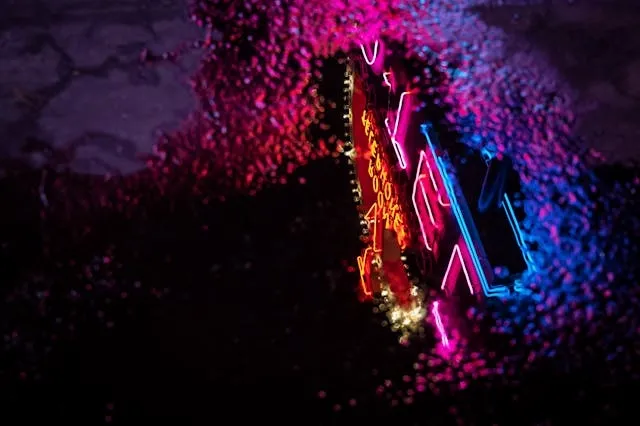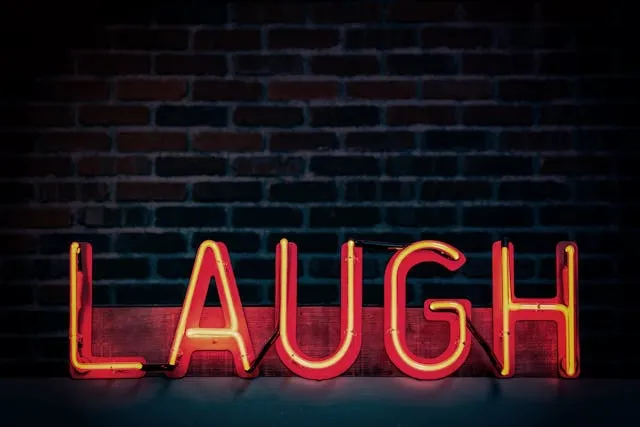Are Neon Signs a Fire Hazard? Can They Catch On Fire?
In the pursuit of an iconic, luminous sign for your business or home, you may encounter concerns about the safety of neon lights. This blog post delves into the question of whether neon signs are a fire hazard. We explore factors that contribute to potential fire risks, safety measures you can take, and distinctions between traditional glass and modern LED neon signs.
Understand the nuances to make an informed choice and get the ideal balance between vibrant lighting and safety for your needs.

Key Takeaways
- Neon signs are not a significant fire hazard, but there is a risk of overheating and fire if you do not install or maintain them properly.
- The heat generated is not normally enough to cause a fire, but faulty electrics or incorrect installation could lead to a fire risk.
- LED neon signs are considered a safer alternative as they produce virtually no heat. They are the modern, energy-efficient choice for indoor and outdoor installations.
- We supply high-quality, customized LED neon lights to your specifications at competitive prices for businesses and individuals.
Are Neon Signs a Fire Hazard? Understanding the Risks and Precautions
Neon lights are visually striking and iconic additions to businesses and homes, but there are question marks about whether neon signs are a fire hazard. The composition of traditional neon signs involves things like:
- Gasses
- Glass tubes
- Electrical components
When you understand this, the idea of potential hazards arises.
Neon signs undergo strict safety certifications and manufacturers are required to adhere to safety standards. As such, the risk of fire is minimal, but it is important to follow some basic safety principles and keep up with the maintenance of your products. Though the risk is low, there are scenarios where a neon sign could elevate the risk of fire in a space, so it’s important to install them carefully, inspect them regularly, and keep on top of repairs when needed.
One of the key contrasts between glass neon vs LED neon lights is that traditional neon produces some heat, while the LED version does not. This is something to keep in mind when choosing a product if you are very safety conscious.

Outdoor vs indoor neon light fire hazards
There may be some variation in the fire hazards associated with neon lights in outdoor and indoor settings. Essentially, the difference is that outdoor neon lights are exposed to the elements, meaning they face unique challenges when more extreme weather conditions set in, or if they are exposed to a lot of dirt and debris. These issues could increase the risk of electrical faults that may lead to overheating. It is still unlikely that neon signs would catch on fire, but it is something to be mindful of.
Neon lights used indoors are shielded from weather extremes, but there are still safety concerns relating to proper installation and usage. It’s important to install in a well-ventilated area and keep yours out of reach of tampering in a busy environment.
Whether installed indoors or outdoors, neon lights are manufactured in accordance with strict safety standards. If you want to install one in an exterior space, look at custom outdoor neon signs with specific design features to add weather-resistance, and provide extra protection in your installation. LED neon signs are often the preferred choice as they offer better moisture resistance.
Can Neon Signs Catch On Fire?
When properly manufactured and maintained, neon signs are not a significant fire hazard. However, in rare cases, a malfunction like an electrical issue or damaged components could potentially lead to a fire.
For instance, the presence of a faulty transformer or wiring could lead to overheating. This heat could ignite a flammable material in the sign, or something that the sign is next to, causing a fire. This is the same risk associated with other electrical devices - there is nothing inherent in neon signs that makes them more of a fire risk than anything else.
Mitigate this risk by adhering to basic fire safety practices and regularly inspecting the sign’s electrical components. Professional installation is recommended for traditional neon signs to ensure your lighting solution is completely safe.
Safety Measures in Neon Signs to Avoid Catching Fire
If you have a traditional glass neon sign, there are some basic safety measures you can take to minimize any potential fire hazard:
- Inspect it regularly for signs of component damage.
- Keep the wiring in good condition.
- Don’t overload power sockets.
- Keep your sign away from flammable materials.
- Monitor the sign for evidence of wear or malfunction.
- Keep it clean with a regular cleaning schedule.
- Promptly address any issues that arise through professional maintenance.
One popular alternative is to invest in custom LED signs instead of the outdated glass neon technology. We supply these cutting-edge alternatives which use energy-efficient LEDs in heat-resistant silicone tubing that is not prone to breakage. The performance of these modern marvels produces no heat and uses very little electricity, so the strain on electrical components is minimal and the risk of fire is lower.
Explore our options to design your own LED neon light at an affordable price and get a beautiful addition to your home, business, or event.

Can Neon Signs Overheat?
Neon signs usually operate within a safe temperature range, rarely exceeding 100 degrees Fahrenheit (around 37 degrees Centigrade). However, instances of overheating can occur. Risk factors include:
- Prolonged usage
- Electrical issues
- Environmental conditions
An overheating neon sign may present a fire hazard, so it’s important to recognize the signs. Things like discoloration, flickering, or strange noises could indicate that your neon sign is getting too hot.
To prevent overheating, follow recommended operating hours, ensure adequate ventilation, and address electrical issues swiftly. Regular maintenance inspections and cleaning are key to reducing the risk of overheating neon signs. Bear in mind that the electrical components in traditional neon lights face more strain than LED ones, because these neon signs use a lot of electricity.
Opt for an energy-efficient LED one or be diligent with the upkeep of your glass neon sign.
Reducing the Risk of Fire Hazards with Your Neon Sign
There are various best practices to be aware of for the installation and maintenance of neon signs. Take a look at the following to minimize the risk of neon sign fire hazards and enjoy peace of mind when using yours in any environment.
Regular Maintenance
It is crucial to engage in regular maintenance of your neon sign. This means inspecting it frequently, looking for:
- Signs of excessive dirt and dust
- Problems with the neon like flickering or discoloration
- Damage to the glass tubing
- Faults or failure in the electrical components or wiring
If you discover any issues that could potentially lead to your neon sign catching fire, address them immediately. For damage or electrical problems, get a professional technician to fix the issue.
Proper Ventilation
Although the fire hazard of neon signs is minimal and there is little risk of overheating, it is still wise to position yours in a well-ventilated space. This will help ensure the sign doesn’t heat up due to its environment. If installed outdoors, try to keep it out of direct sunlight as much as possible.
Professional Installation
Professional installation is always recommended for traditional glass neon signs to get a safe result. Our custom LED signs can easily be installed yourself as they are lightweight and designed to be hung or mounted wherever you like.
Cleaning
Cleaning is an important part of the upkeep of your neon sign. Accumulated dust and dirt will diminish its vibrancy, but may also hamper heat dissipation, increasing the risk of overheating. And, if dust encroaches into the wiring and circuitry, it could further increase the fire hazard in a neon sign.
Do I Need a Fireman’s Switch for Neon Signs Installations?
A fireman’s switch may be a wise accompaniment to a neon sign installation. These safety switches allow emergency services to easily cut power in the event of a fire. It is unlikely that there is a legal requirement for one, but having one in place is a prudent measure to enhance safety. If you have a fireman’s switch for your neon sign and other electrical installations, you will help facilitate a rapid response in the event of an emergency.
Design low-heat custom LED signs for minimal fire risk
Our custom LED signs produce very little heat and are not prone to electrical malfunctions. The materials used are not highly flammable, so you can rest easy.
Are LED Neon Signs Safe? Comparing Technologies and Safety
Generally speaking, LED neon signs are considered safer than traditional neon signs. The main reason for this is that, unlike their counterparts, LED neon lights don’t require high-voltage electrical currents or inert gasses to create light. No heat is produced during their operation, they are less prone to electrical malfunctions, and there is no risk associated with glass breakage.
LED signs operate at cool temperatures, so neon sign fire hazards related to overheating are less of a concern. The technology includes no flammable materials, so they are more resistant to fire risks. They are lightweight and very robust, and their energy-efficiency also means you save money and reduce your carbon footprint when compared to using a traditional neon sign.
Our custom neon flex signs are the cutting-edge, modern solution for safety-conscious businesses and homes. You get a very similar aesthetic with less energy consumption and a significantly lower risk of your neon signs catching on fire. The price is lower as well, so LED neon lights are the all-round preferred choice for modern consumers.
Neon Safety Practices: When Does a Neon Sign Need a Firefighter's Switch?
A firefighter’s switch is usually required for a traditional neon sign that:
- Is mounted high above ground level, thus making it difficult to reach.
- Exceeds a certain voltage threshold, usually 1,000 volts.
Having a firefighter’s switch makes it easy to immediately shut off the power to your neon sign in case of emergency. If a fire occurs, firefighters will be able to more effectively combat the fire by eliminating the power supply that caused it in the first place. We recommend that you consult local building codes and regulations to determine your specific responsibilities in relation to firefighter’s switches.
Experts will tell you that, if your neon sign is not portable and is a permanent installation, you should have a firefighter’s switch for it. Seek guidance from licensed electricians or fire safety experts if you have any doubts. Alternatively, install an LED neon sign instead of a traditional glass one for a neon sign that doesn’t present a fire hazard.

Do Neon Lights Burn Out or Explode?
Neon lights do not burn out like incandescent light bulbs, but they do experience issues like fading and dimming over time. This can happen due to problems like:
- Wear and tear to wiring and circuitry.
- Faulty components.
- Cracks or breakages in the glass tubing.
How long neon signs last depends on the way you look after them, but traditional glass products tend to have a lifespan of 8-15 years in most cases. LED neon lights have a typical operating life of 50,000 hours, which usually equates to a longer lifespan, but upkeep and maintenance are important for them as well.
There is a common misconception that neon signs are not only a fire hazard, but an explosion risk. There has never been a recorded incident of a neon sign exploding - they don’t contain anything that could cause this to happen. Whilst it cannot be ruled out completely, it is virtually impossible for a neon sign to explode.
Other myths about neon signs include:
- They release harmful radiation.
- They can expose you to toxic gasses.
Generally speaking, all types of neon signs are safe. There is a remote chance that a neon sign can be a fire hazard, but good installation and maintenance mean you can have peace of mind.
Frequently Asked Questions About 'Are Neon Signs a Fire Hazard'
Are Neon Signs a Fire Hazard?
Generally speaking, neon signs do not catch fire. They warm up when in operation, but not to unsafe levels. Under exceptional circumstances, like with electrical faults, they may present a fire hazard.
Can Neon Signs Catch Fire?
It is extremely unlikely that a neon sign will catch on fire, but it is not impossible. Proper installation and regular maintenance are important, and you could opt for LED neon lights as an even safer alternative.
